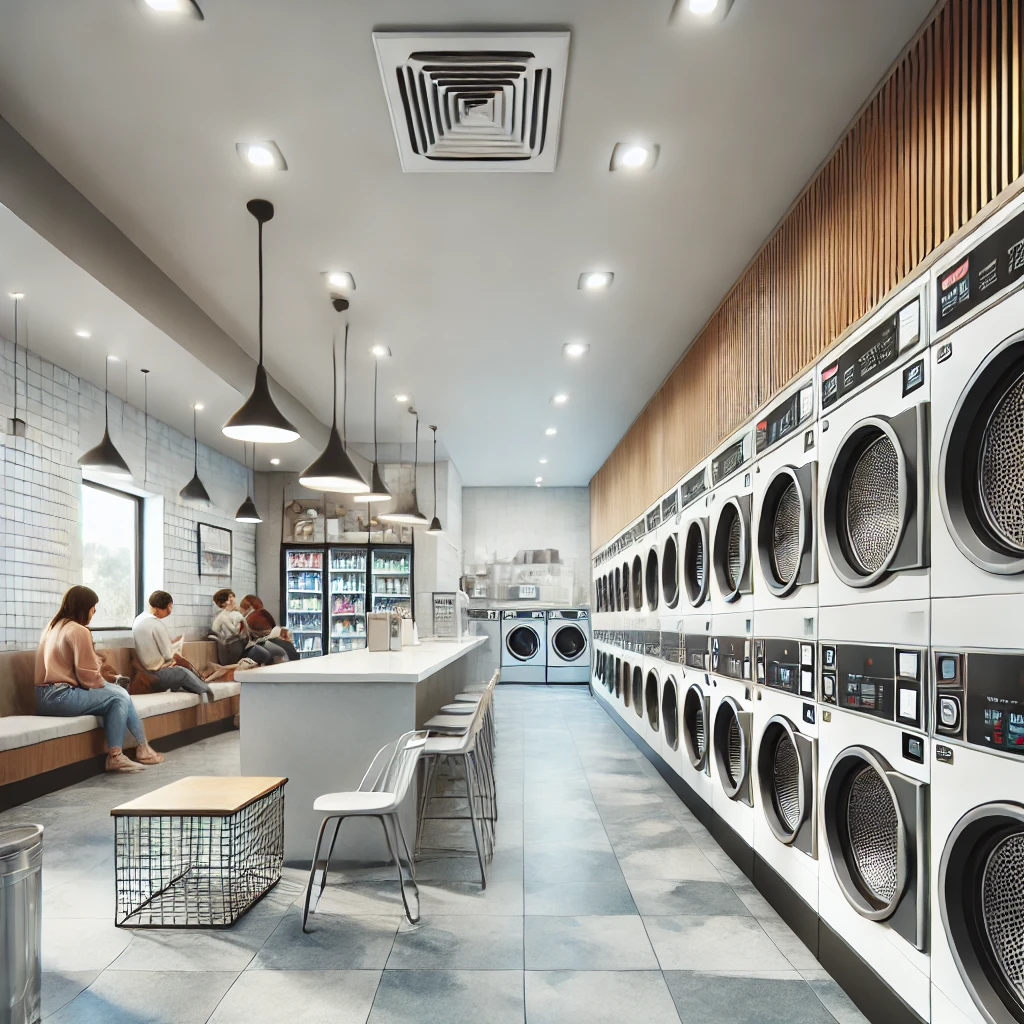Set up, scale smart, and succeed with efficient Laundry Room Management
Self-service laundries are a steady, recession-resistant business model. But while they don’t rely on staff to run day-to-day operations, they still demand serious management behind the scenes. Whether you’re opening in an inner-city suburb or serving a regional town, success depends on one thing: clear, consistent Laundry Room Management.
If you’re planning to open a coin- or card-operated laundry, this guide will walk you through the essentials—what to plan for, where to spend (and save), and how to build a business that stays clean, efficient, and profitable.
Why Self-Service Laundry Still Works
Despite the rise of convenience-based services, self-service laundromats continue to serve a clear market: renters, students, travellers, and residents without access to in-unit washers and dryers.
But a modern laundry isn’t just rows of machines. It’s a low-touch business with high expectations:
- Machines must always be clean and operational
- The space needs to feel safe and accessible
- Maintenance must be fast and reliable
- Costs must be clear and fair
All of this relies on behind-the-scenes planning—starting with practical Laundry Room Management.
Choose a Location That Matches the Demand
Location matters more than fit-out when it comes to laundromats. Your ideal site should:
- Be within walking distance of apartment blocks or hostels
- Have high foot traffic or nearby parking
- Offer good street visibility or signage options
- Be zoned for commercial laundry use
Run a quick demographic check. Look for suburbs with high rental populations, fewer home laundry setups, and limited competing laundromats. Then, confirm your space can support plumbing, drainage, and ventilation needs.
For more insights, this external guide from business.gov.au outlines key location and compliance considerations for service-based Australian startups.
Fit Out for Function First
Design your layout around workflow. Even in a self-service setup, your customers expect an experience that feels clean and intuitive.
Your basic layout should include:
- Washer and dryer zones (group by capacity for faster decisions)
- Change machine or card reader kiosk
- Folding benches with wall hooks for bags or coats
- Vending area for detergents or softeners
- Visible signage for pricing, safety, and contact info
Safety features (like CCTV, emergency lighting, and slip-resistant floors) not only protect your customers—they can reduce insurance premiums and build trust.
Planning for daily turnover, cleaning, and customer use is where strong Laundry Room Management becomes essential. You’ll find more detailed guidance on setting up reliable workflows and customer handling processes in this breakdown of How to start a self-service laundry business?
Invest in the Right Machines—and Protect Them
Equipment is your biggest upfront investment—and your key to long-term profits.
Look for:
- Commercial washers and dryers (10kg+ loads) with fast cycles
- Smart payment options (tap-and-go, app-based, or token systems)
- Energy- and water-efficient models
- Machines with easy diagnostic tools for remote checks
Don’t skimp on maintenance. Even one machine out of order on a busy day can lose you customers. Build a simple log system to track usage and schedule servicing.
Even unattended laundries require active Laundry Room Management, especially when it comes to performance, upkeep, and customer troubleshooting. Explore how route operators and external support teams help manage these setups in the full guide to How to start a self-service laundry business?
Price for Profit, Not Just Popularity
Setting your price point isn’t just about competition—it’s about covering operating costs and leaving enough room for growth.
Factor in:
- Utility rates (gas, electricity, water)
- Equipment depreciation
- Lease and insurance
- Cleaning and maintenance
- Software or machine servicing contracts
Consider dynamic pricing for different load sizes or off-peak times. And always be upfront with customers—clear signage and instructions help prevent disputes or confusion.
Automate Where You Can, But Stay Connected
Today’s self-service laundries don’t have to be hands-off operations. Smart tools let you monitor performance, income, and issues in real time—even if you’re not on-site.
Useful tools include:
- App-based customer support
- Real-time machine tracking
- Digital income reporting
- Remote machine resets or alerts
That said, customers still want to feel someone’s in charge. A local contact number, fast-response maintenance, and visible cleaning rosters go a long way to showing this isn’t a forgotten facility.
Planning a successful unattended setup? The key is consistent Laundry Room Management—especially if you’re servicing clients across multiple sites. Read more about coordinated operations in this outline of How to start a self-service laundry business?
Add Revenue Without Overstretching
Once you’ve built your base operation, consider low-labour ways to expand your income:
- Add a vending machine (drinks, snacks, detergents)
- Offer wash-and-fold pickup on weekends
- Rent advertising space inside your facility
- Partner with Airbnb hosts or nearby businesses for after-hours laundry services
These side streams can add meaningful revenue without increasing fixed costs—especially if integrated into your route management or delivery schedule.
Wrap-Up: A Self-Service Laundry Built on Systems Wins Every Time
It’s easy to think a laundromat runs itself. But in reality, the cleanest, most profitable operations are the ones with structured systems behind the scenes.
From machine tracking and maintenance logs to customer care and facility safety, it’s smart Laundry Room Management that keeps your machines turning—and your income growing.
Plan your fit-out. Build reliable systems. Price fairly. And keep your eyes on efficiency. The result? A laundry business that works while you sleep—and grows while you scale.

